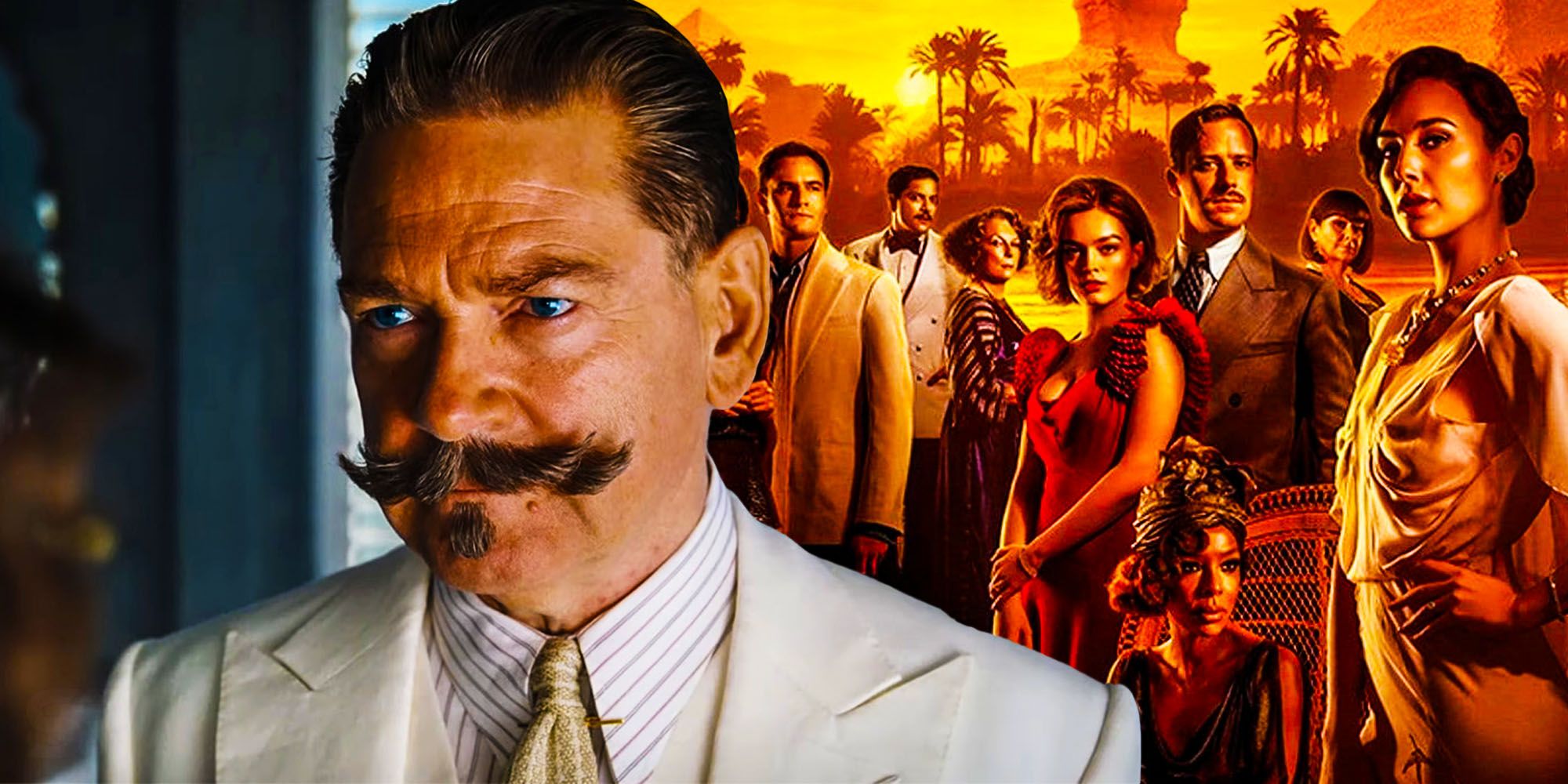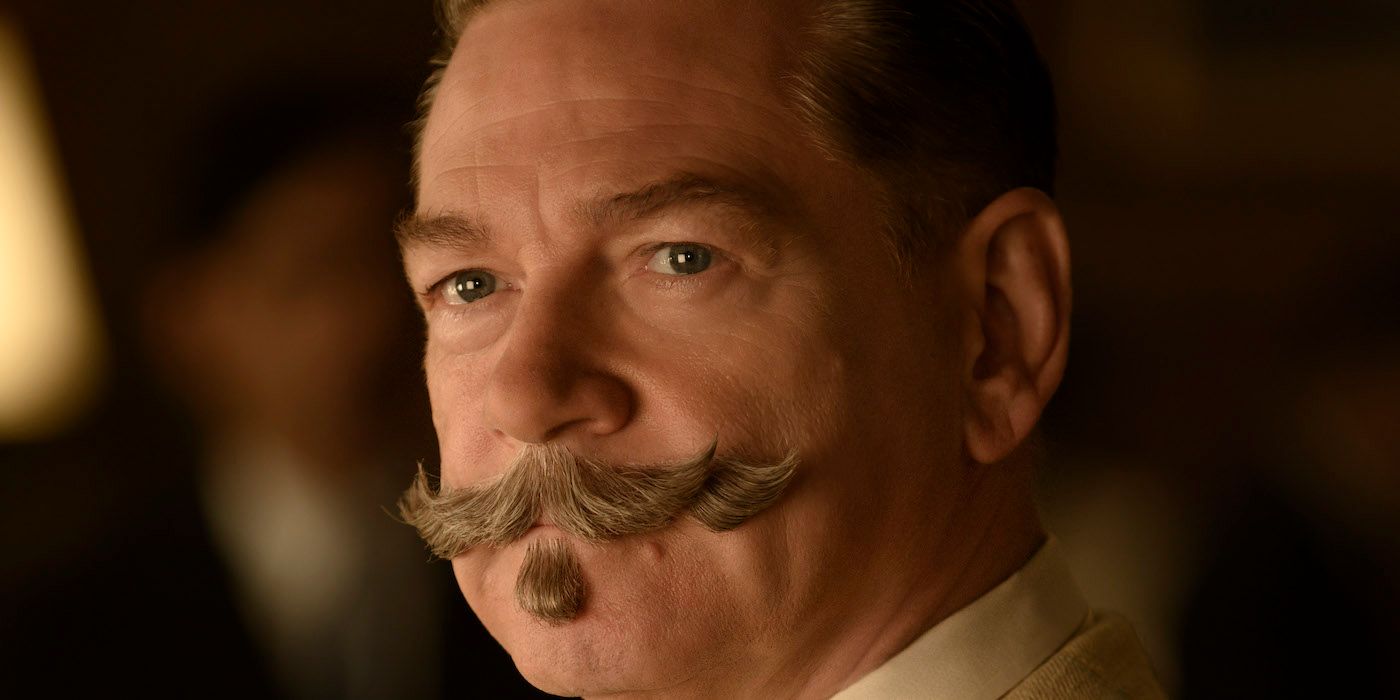Warning: Spoilers ahead for Death on the Nile.
Death on the Nile has a major retcon and it involves Hercule Poirot’s mustache. The renowned detective’s mustache is nearly as famous as he is. In Agatha Christie’s novels, of which he appeared in over 30 of them, she described his mustache as being “upward-curled” and is, alongside his nose, one of the most visible things about his face. His mustache has been a big part of every live-action adaptation featuring Poirot, with every actor portraying the detective sporting it. But Death on the Nile changes things up.
Kenneth Branagh’s gray, long, curled, and extremely well-groomed mustache in Death on the Nile, a direct sequel to Murder on the Orient Express, is central to the story. Not only do the other characters comment on it, but Poirot himself takes great pride in it (and in solving murder mysteries). Branagh once mentioned that Poirot’s mustache could be considered one of his super powers; that’s how crucial it was to his persona. However, Death on the Nile takes Poirot’s most noticeable attribute and gives it an entire backstory.
The real reason Poirot sports a mustache — per Death on the Nile’s prologue — is to cover up a war injury. He received quite a few facial lacerations after he was caught in an explosion that occurred on the front lines during World War I. After his wife Katherine visited him in the hospital, he admitted insecurity regarding his face wounds, but she told him he could grow a mustache to hide the scars. He heeded her advice and voila! Poirot went on to become the mustachioed detective everyone knows and loves. It’s made clear that Poirot never had a mustache before the war. The film ends with Poirot shaving off his mustache in a bid to open himself up once more to the possibility of love and life outside of his work, especially after realizing he may have been using his mustache to hide parts of himself and keep others at arm’s length.
In Christie’s books, Poirot’s mustache is a source of great pride and is an example of his big ego, one that swells with every case he solves. Not only does Death on the Nile reveal the glorious mustache’s backstory to explain why the detective grew it out, but it’s the first time in Poirot’s fictional history that details the reasons behind the stylish feature. Giving Poirot’s mustache its own origin story retcons what has already been established. While the detective is still arrogant when it comes to his abilities to solve cases, the mustache story in Death on the Nile also changes the way his most notable feature is viewed — not as a point of pride, but as a necessity to hide an injury no one knew about. It gives Poirot a more grounded backstory, one that is laden with sadness.
To be sure, Hercule Poirot is still very enamored by the magnificence of his mustache and its presence does throw people off or, at the very least, gets them talking. However, dedicating a portion of the story in Death on the Nile specifically to Poirot’s facial hair and the reasons for its existence does alter how he’s been depicted in Christie’s original novels, as well as in every other live-action adaptation.



